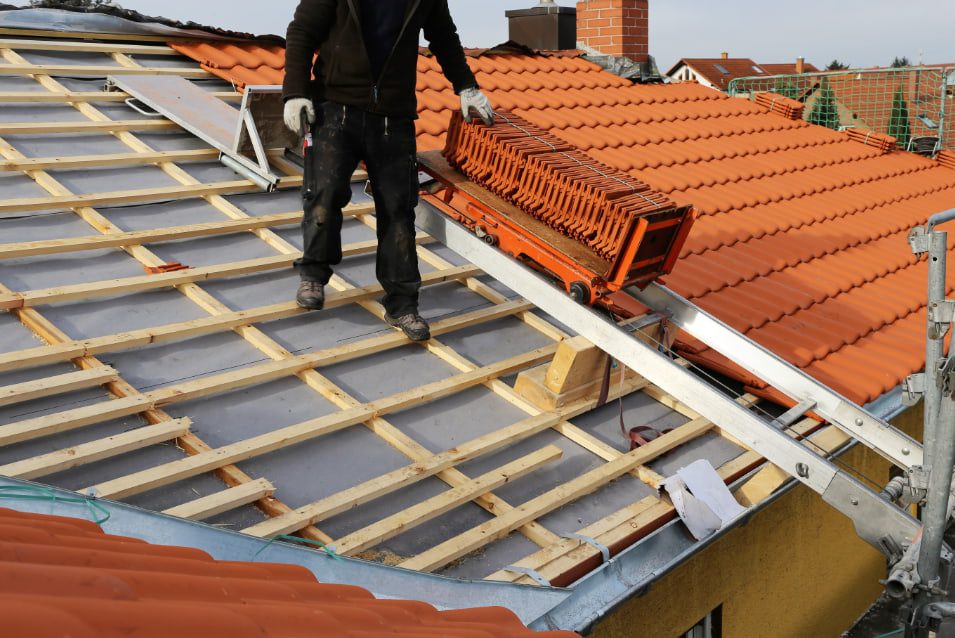10 Inspirational and Architectural Lessons from Zaha Hadid
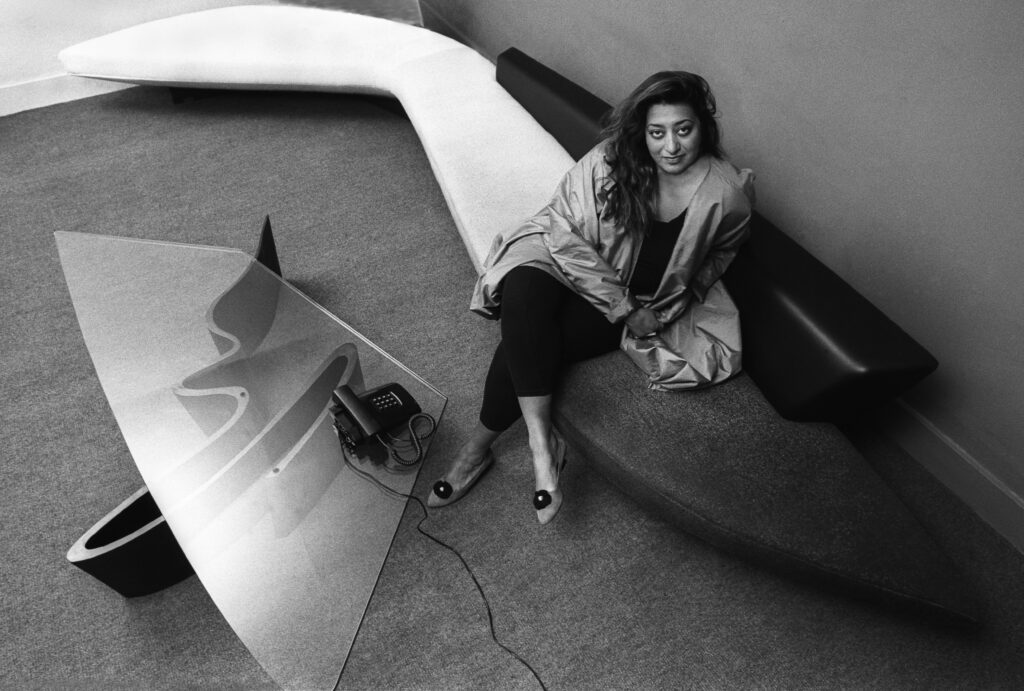

Christopher Pillitz/Getty Images
Born in Baghdad in1950, British- Iraqi Zaha Hadid is the first woman architect to win the prestigious Pritzer Prize, which she did in 2004. Her childhood saw Baghadad’s better days without strife and warfare. There she attended a religiously diverse Catholic school and was instructed in French by nuns. Her father was a politician and it was assumed and expected that she would further her educational studies. She attended the American University in Beirut where she studied Math. Her family fled the country after Saddam Hussein came to power, and the outbreak of war with Iran. In 1972 Hadid moved to London and enrolled at the Architectural Association School of Architecture. In 1980 she opened her own office which proved a bit of a challenge; at first her ideas were more in demand than her actual designs.
Today she is well revered and in the forefront of architectural design. She has broken through the glass ceiling and her modern, cutting edge philosophies have helped her to push the boundaries of architecture and design. Today her firm employs 350 people and has handled 950 projects in over 44 countries.
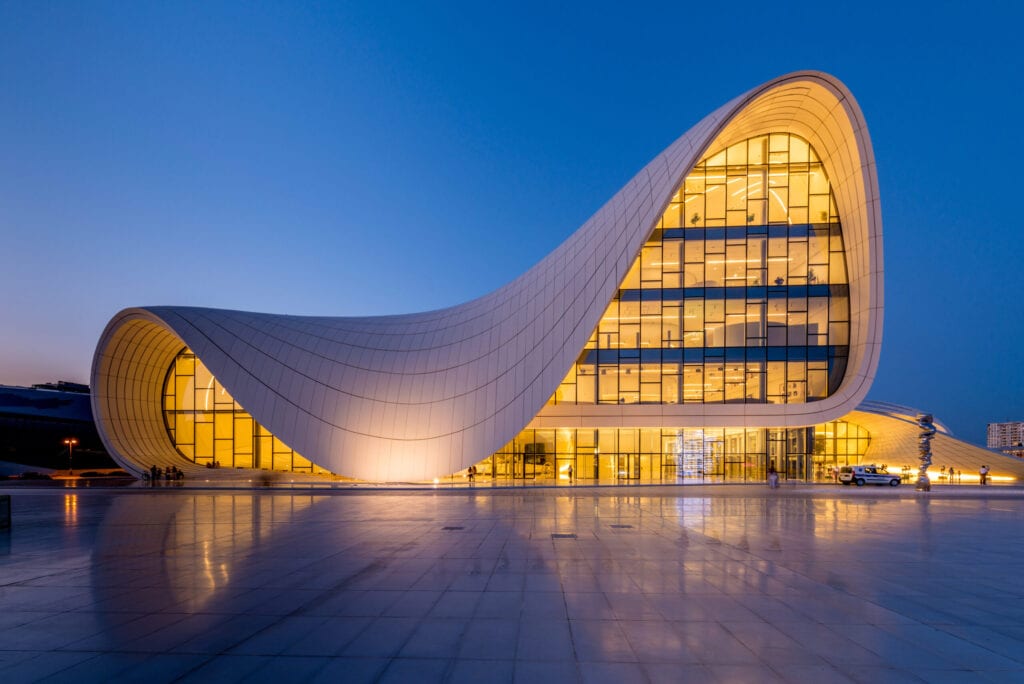
Elnur/ Shutterstock
1. “Architecture is really about well-being. I think that people want to feel good in a space… On one hand it’s about shelter, but it’s also about pleasure.”
Hadid, while considered and thought of as a revered architect, has also branched into the world of interiors. Her constant search for an aesthetic vision encompasses all areas of design, from the large exteriors of her architecture to interiors and furniture. The interiors are just another extension of the outside. Her interior talent is seen at The Hotel Puerta America in Madrid where Hadid and other renown architects were commissioned to designed various rooms within the hotel.
2. “One of the things I feel confident in saying we can bring some excitement and challenges to people’s lives. We want them to be able to embrace the unexpected.”
The Phaeno Science center, an interactive science center, located in Wolfsburg, Germany, is a perfect example. In 2000 Zahid participated in and won an architectural design competition for the design of the building. The center opened about five years later, and houses over 250 interactive exhibits from Ansel Associates, Inc. The astounding concrete structure designed by Zaha Hadid, her German associate, Mayer Bährle architects and Adams Kara Taylor has been described as a “hypnotic work of architecture – the kind of building that utterly transforms our vision of the future.”
Cleverly “the building effectively stands on concrete stilts allowing visitors to the Autostadt to pass through without having to interfere with the workings of the building. Phaeno is connected to the Autostadt via a metal bridge accessed by escalators and stairs either side. The underside of Phaeno is illuminated and the stilts are too.”
3. “For a woman to go out alone in architecture is still very, very hard. It’s still a man’s world.”
Her thinking of spacial issues is what sets her apart from the crowd – both men and women. The BMW Central Building was based on the architect’s beliefs that a building is a space that is multi-faceted and multi-dimensional. Here she reinterprets a traditional office. The building and its functions become a more “dynamic, engaging nerve center.” Her fluidity transcends the traditional blue collar/white collar spatial divisions, effectively blurring the barrier.
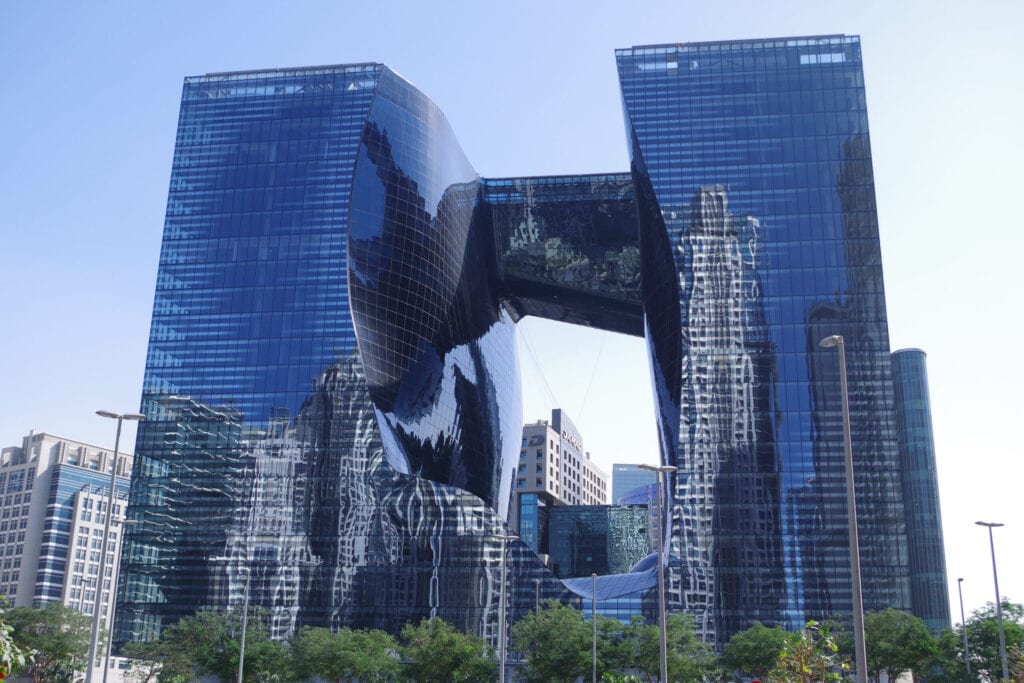
Elnur/ Shutterstock
4. Hadid was influenced by her early childhood “on villages of the marshes in Southern Iraq. The beauty of the landscape where sand, water, buildings and people all somehow flowed together.”
The Maggie Centres in Fife, Scotland does just this by blending the natural and the man-made. The building was designed to offer a protective environment, a haven, for cancer patients. Located adjacent to Victoria Hospital, the centre sits at the edge of a hollow surrounded by lovely foliage and countryside, blending man-made, modern building and technology with nature.
5. “There are 360 degrees. Why stick to one?”
To add diversity to her architectural projects, in 2002 Zahid completed the building of the ski jump at Innsbruck, Austria. Zahid describes the ski jump as “a concise piece of functional design, an instrument for high performance sport, shaped with mathematical precision.” She created this to “develop a seamless hybrid. The assemblage of elements was resolved in the manner of nature, developing a seamless hybrid, where parts are smoothly articulated and fused into an organic unity.”
Architecture is meant to be looked at and enjoyed from many angles. Hadid breaks through, not only the glass ceiling, but all the barriers put up by traditional walls and floors. What could better reflect Hadid’s spatial philosophy than an Olympic ski jump?
6. “You see more established, respected female architects all the time. That doesn’t mean it’s easy. Sometimes the difficulties are incomprehensible… In practice I still experience resistance, but I think that keeps me focused. Perhaps it was my flamboyance rather than being a woman that gives me such determination to succeed, but I have always been determined”
Despite Hadid’s level of success, of which she is grateful, she claims that it’s been and continues to be a very long struggle. She still sees her fair share of rejection which she claims keeps her in place and helps her to think about things and create things in a different way. The Millennium Center takes visitors on a journey through 3 aspects of the mind – input, process and output. Here floors and walls and other architectural elements are “pulled from one continuous space to house a wealth of thought-provoking stimuli.”
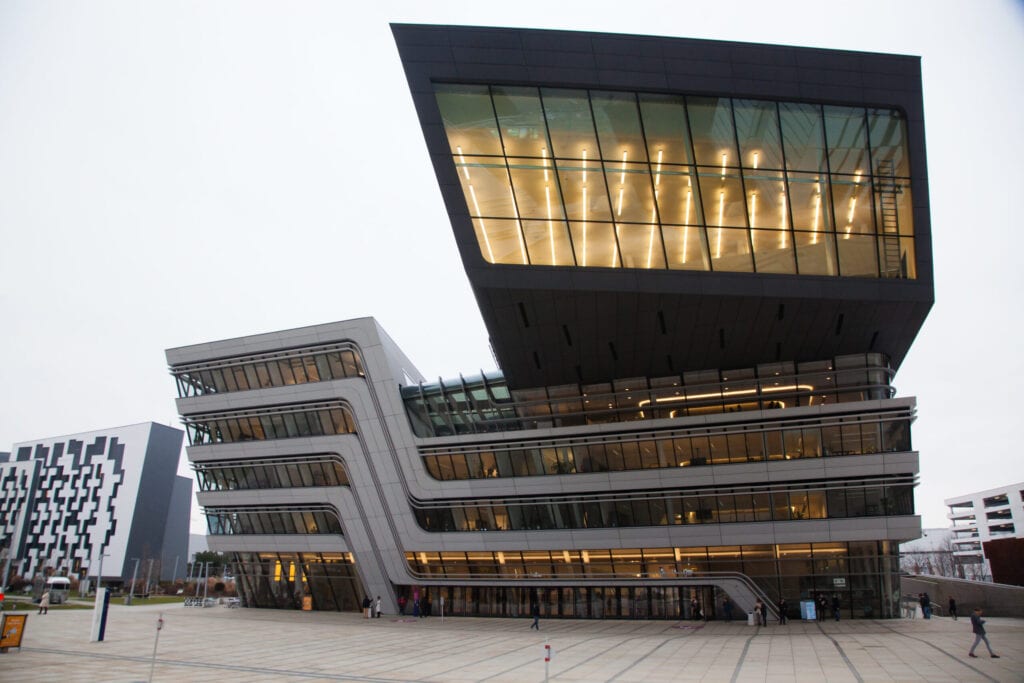
Melinda Nagy/ Shutterstock
7. “I really believe in the idea of the future.”
Architecture is forward moving and forward thinking. All the greatest architects have had this modern, cutting edge vision. The Hoenheim-Nord Terminal in Strasbourg, Switzerland was created to echo the movement of everything – people, bicycles, cars and trams. Together they form a constantly shifting but clearly delineated whole.
8. “You are not confined to look at a space in one given way. You can really meander around.”
Another example of the fluidity of movement and space is Hadid’s creation of the 2012 Olympic Aquatic Center in London, England which was heavily influenced by the movement of water. It was created to resemble the motion of a wave with an undulating roof that sweeps up enclosing the pools with a “unifying gesture.”
9. “It is insufficient for architecture today to directly implement an existing building typology; it instead requires architects to carefully examine the whole area with new intervention and programmatic space.”
The Vitre fire station was created to fill an empty void created by a devastating fire in the 1980s. Built into a landscape with existing factories, the fire station was built to define rather than occupy space. It represents a moment frozen and ready to explode. The fire station is no longer housed in the building, instead it is home to a chair museum.
10. “You don’t always have to show art in what’s called a white box. You can have a kind of complexity within an exhibit which actually respects the art as well.”
The Rosenthal Center for Contemporary Arts in Cincinatti, Ohio was the first project to be completed by Hadid and the first museum in the United States to be designed by a woman. Her idea was to bring the city into the building, an open, “urban carpet”, welcome to everyone. She wanted to bring contemporary art to those who were not used to or exposed to such. In back of the museum she has created a backdrop as though the carpet is rolled out – a sort of flights of fancy allowing visitors see all these different spaces. Her desire to move away from the “white cube” that we think of when we think of architecture. Here movement and light flow giving each gallery and exhibition a unique feel.
Strong-willed, and feisty Zaha Hadid has been called difficult to work with by others, but her clear, defined and forward thinking vision, combined with her steadfast determination have garnered her as not only one of the world’s leading female architects, but one of the world’s leading architects. Her visions continue to transcend time, movement and space and will for years to come.
